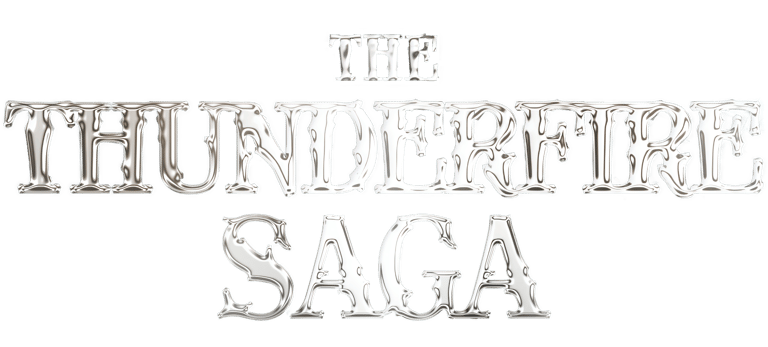Calendars
The Yonians use the Selerian calendar, introduced by Emperor Yonturil in the zero year of the Seafall. This system replaced the Methurmic calendar, which had begun 720 Antoric years earlier with the cataclysmic eruption of Seleturm supervolcano.
The Perilleans use the Palpurian calendar, which became widespread with the rise of their colonial empire. It begun in 12 Selerian Era, from the League of the Nine Athelions.
A key difference between the calendars lies in their New Year celebrations:
· The Selerian year starts in spring (Belation).
· The Palpurian year begins at Winterturn (Halaturmion).
This mismatch creates a one-third-year variance, which has been adjusted for clarity in these Chronicles.
Antoric Year
The Antoric year consists of three distinct seasons: the Verdant, the Torrid, and the Frigid, which arise from the interaction of the golden Sun and the azure Bloon, the twin stars of the Antoric System. They are known as Milonis and Pelonnis, or Southstar and Northstar.
· Verdant: Begins with the appearance of the Sun from behind the Bloon. In many places, this is also called the rainy season.
· Torrid: The Bloon begins to appear at night, creating the nightless night, the Bluing.
· Frigid: The Bloon covers the Sun, plunging the land into a pale, eternal azure twilight called the Everbluing, resulting in temperatures plummeting.
Every seventh Antoric year, the planet Tarkhan disrupts this cycle, causing Tarkhan’s Winter, which brings the Winterturn forward and delays the arrival of spring.
The moon follows a fifteen-month cycle, though in certain southern regions, it follows a thirteen-month cycle instead.
Selerian – Transliteration – Days
Veran Elariat – Verdant Season – Belation Festival
1. Belarim – Newthember – Creation 67
2. Gralarim – Junthember – Youth 68
3. Gortharim – Greenthember – Growth 67
4. Felarim – Lushthember – Living 68
5. Narnirim – Fielthember – Harvesting 67
Pan Elariat – Torrid Season – Veration Festival
6. Danarim – Bluethember – Bluing 68
7. Mallarim – Halthermber – Halting 67
8. Khortarim – Withember – Withering 68
9. Thalarim – Fallthember – Falling 67
10. Melgorim – Brownthember – Browning 68
Halm Elariat – Winter Season – Halaturmion Festival
11. Phanarim – Gloomthember – Shadowing 67
12. Rorarim – Frosthember – Frosting 68
13. Galirim – Glacethember – Icing 67
14. Halarim – Deepthember – Deeping 68
15. Turmion – Turnthember – Passing 67
Weekdays
Monday – Agathan – Aganday
Tuesday – Belathan – Belanday
Wednesday – Dalathan – Dalanday
Thursday – Sagathan – Saganday
Friday – Eulathan – Eulanday
Saturday – Yannathan – Yannanday
Sunday – Meriathan – Merianday
Measures of Time
Year - anturmion - ("turm) - 1012 days
Season - eularion - (”ela”) - 337, 338, and 337 days
Month - holonion - (”holo”) - odd 67, even 68 days
Week - baat - 7 days
Day - than - 36 hours
Hour - manim - 36 minutes
Minute - septel - 72 seconds
Second - tectim
Units of...
Length
1 nim 1,48 mm - fingernail
1 tuil 8,89 mm - finger - 6 nims
1 tim 26,7 mm - thumb - 3 tuils
1 cemb 80 mm - palm - 3 tims
1 rukh 240 mm - foot - 3 cambs
1 tapel 720 mm - step - 3 rukhs
1 litan 720 meters - 1000 tapels
Weight*
1 ser - 0,072 g (grain - closes equivalent)
1 khoron - 72 sers - 5,184 g (coin)
1 tauss - 6 khorons - 31 g (ounce)
1 punt - 12 tauss - 373 g (pound)
1 berel - 3 punt - 1120 g (kilo)
1 lakot - 9 punt - 10 090 g
1 casot - 18 punts - 20 155 g
* rounded for easier readability
Volume*
1 minora - 15,234 ml (vial)
1 caliput - 12 minora - 183 ml (cup)
1 lect - 6 caliput - 1097 ml (flask, pint)
1 umbar - 18 caliput - 20 liters (bucket)
1 kumbat - 12 umbar - 237 liters (barrel)
1 loss - 4 cumbat - 948 liters (vat)
* rounded for easier readability
Currencies
Perillean Petinx (In Palpur - Petinx - money)
Plater, Septel, Yulion (Plp. Blote, Ceptel, Ceulion)
Platers were minted from bronze, brass, copper, and even lead, which caused their value to vary locally, and they were considered the money of peasants and slaves.
Septels (usually called selers by the Yonians) were silver and yulions were gold; septels were in daily circulation, yulions seldom due to their considerable value.
Yonian Seler
The Seler (also known as Zeler, Celere, Jeler, Sheler, or Shiller) was the historical currency of the Yonians, in use since the Silantic Era. The word literally means “silver” in Silvon language. To Yonians, "seler" is the synonym for any money.
In the Ikharonian dialect, the term appeared as sheler. The Seler was minted in gold, silver, and copper.
Design and Symbols
Coin tails often featured:
- the saginair,
- the Yalian Star,
- the Harman Tree,
- the Silver Goblet (or the Yonian Cross),
- the Seal of the Paration, and
- as a heads crown motif, usually the silhouettes of the Merials.
Valuation and Standards
Although the Seler’s value was defined in gold, practically all coins in daily circulation were minted in silver and copper.
One Seler was officially valued as:
- the equivalent of one khoron in gold, or
- 72 sers (grain-units),
- equaling 5.184 grams of fine gold.
In practice, however:
Gold Selers (called Damatsi Seler, lit. “golden silver”) were rare and reserved for large transactions. The Merial Mint referred to:
- Gold coin as Choron (Khoron),
- Silver coin as Seler (Seler), and
- Copper or base coin as Trence (Trenkh).
The official exchange ratio at the Teleng Auction Market auction averaged 1 gold : 36 silver : 80 copper.
The Yalis had a Yali-seler of their own, dubbed as Yaler (Ymb. Jaler, Jeler).
Kondar Krammer (Renkeranck Steel)
The Kondars used Brimmboric steel for their coins, mined from the Ramrock and Grimrock mines. It had two properties: the alloy was very resistant to rust, and it could be hardened so hard ordinary tools could not bite it. The Coin Rancks carried two files, an ordinary file which was not supposed to bite, and a special file made from Valcamic steel which could scratch a krammer to confirm the authenticity of this money.
Virtually impossible to counterfeit or clip and in limited supply, controlled by the Renkeranck Guild running the mines during their era, they were even valued against gold and considered a stable currency during the Kondarian Iron Empire era. Many coins remained in circulation in later eras due to their durability and their presumed value protected them from being smelted into weapons grade steel.
Hellornian Helvar (The Dragonscale Money)
Definitely one of the more unorthodox types of currency, the dragonscale money of Hellornia consisted of pieces of collected dragonscale. The Hellornian dragons shed translucent, iridescent scales of various sizes and colors that glistened in the sunlight, and these scales were both rare and extremely durable.
The Hellornians used them as a measure of value, in addition to making scale armor from them. Despite (or rather due to) its rarity, the currency was little known outside Hellornia.
Other currencies
Thaal, the currency of Selassinians
Rahi, name for money in Masorania
Kofor, a Colossian currency
Samporyll, a Shamborian currency
Ängrel, gold coins of the Ängerian dwarf-people of the Norths
Vlatar, the Vaskitian currency
Kashel, Naxorian currency
Join our newsletter here!
Copyright © 2024 by Eric Highwater all rights reserved.
Highwater International Publishing House | 2024
Thunderfire Saga | 2004 - 2025
No part of this website may be reproduced in any form without permission with the exempt of fair use.
Free sample requests for book bloggers, reviewers, critics, freelancers, journalists:
samples@metorm.com


